When I think about the big bullet companies, I think of metal(s) futures contracts, sales, supply chains and manufacturing- probably in that order. Planning the desires of the company, making those hopes and dreams come true, a way to build what is necessary for them come true… well, it’s enough to boggle the mind. Winchester, or Olin Corporation, is an integrated metals and chemical manufacturer. Did you know they make a lot of chlorine? They also sold their brass business back in 2007.
Nosler is not as large any of the big three, and was founded around the time Hornady and Speer got their start. Nosler is still a family owned and run company in Oregon- I’m not sure if it is 2nd or 3rd generation at this point- and they are well known in the bullseye community for making P/N 44847, a 185 grain jacketed hollow point bullet, that became somewhat famous due to it’s use by the Marine Corps pistol team. Based on this reputation alone, I sought out a couple of boxes and finally sat down to measure a few.
Diameter:
Measurements taken were weight, length, and diameter (in that order). I found very quickly that I was unable to discern any diameter difference- it’s entirely possible that there is a difference that a micrometer could tell, but the calipers I was using all turned up measurements of .451 inch in diameter.
Length:
I had some outliers in my length measurements:
Now, it is entirely possible that the outliers were due to faulty measuring on my part. I did find that, depending on how you rotate the bullet around its axis, you can find yourself coming up with different measurements. I always chose the longest by turning each bullet a quarter turn and then taking a measurement; whatever was the longest was the one I recorded. I did not have to do much rounding up or down- most every measurement was right on or near a graduation. Nevertheless, it is entirely possible I introduced bias, though I took great pains to avoid doing so.
That said, this data is not normally distributed (though it is mostly evenly distributed) as I keep measurements to .001″. However, it probably would be normally distributed if I could get repeatable resolution to another significant digit- which would be nice, but also expensive.
The bulk of measurements were from .532 to .533- a very narrow band. I wonder what the specification is for the length of this bullet?
Weight:
While the P-value in this case is high, it isn’t as high as that of the Speer TMJ 185 Grain bullets I measured previously. That in and of itself is not an indictment on this particular bullet in general, or this lot (KM06F18-1/150513121312) in specific. All this means is that the weight was normally distributed across the sample taken (50).
You’ll note the same trend here was was seen with the Speer before- on average, the bullet you pull out of the box is going to be lighter than 185 grains. Also, in regards to the weight distribution, the Speer had a better standard deviation than the Nosler.
A note of process change: I’ve since moved to my new forever home and sufficiently warmed up the scale and have kept it in a temperature/humidity stable area, which is different than the place in which I made my previous measurements of the Speer TMJ 185. In due course, I’ll run some gage R&R tests to see what variability my equipment (and technique!) may play in my results.
Relationship Between Weight vs Length:
A regression analysis indicates that there is some relationship between weight and length, but that they are not particularly strongly related with one another, as Pearson’s coefficient is a modest 25.5%.
I think if the outliers were taken out, the regression model would still not be as robust a predictor of weight vs. length. I’m at a loss as to why there isn’t a stronger relationship, other than:
- Measurement bias in length or weight
- Bullet construction properties are not represented well in a regression analysis
- Analysis may in fact be correct, and this is the level of quality to be assumed is aimed for
- Outliers distorting the data
As more measurements are taken, I’ll be sure to update the results.
Conclusion:
In general, these bullets appear to be well made and arrived in excellent shape. On average, these bullets are underweight, though there seems to be a very narrow band(s) of bullet length that is showing up in the data, which may help keep bullet seating repeatable and crimping consistent. This in turn may explain why these bullets are known for their match quality.
Measurement Tools:
Brown & Sharpe Dial Micrometer/Frankford Arsenal DS-750 Scale
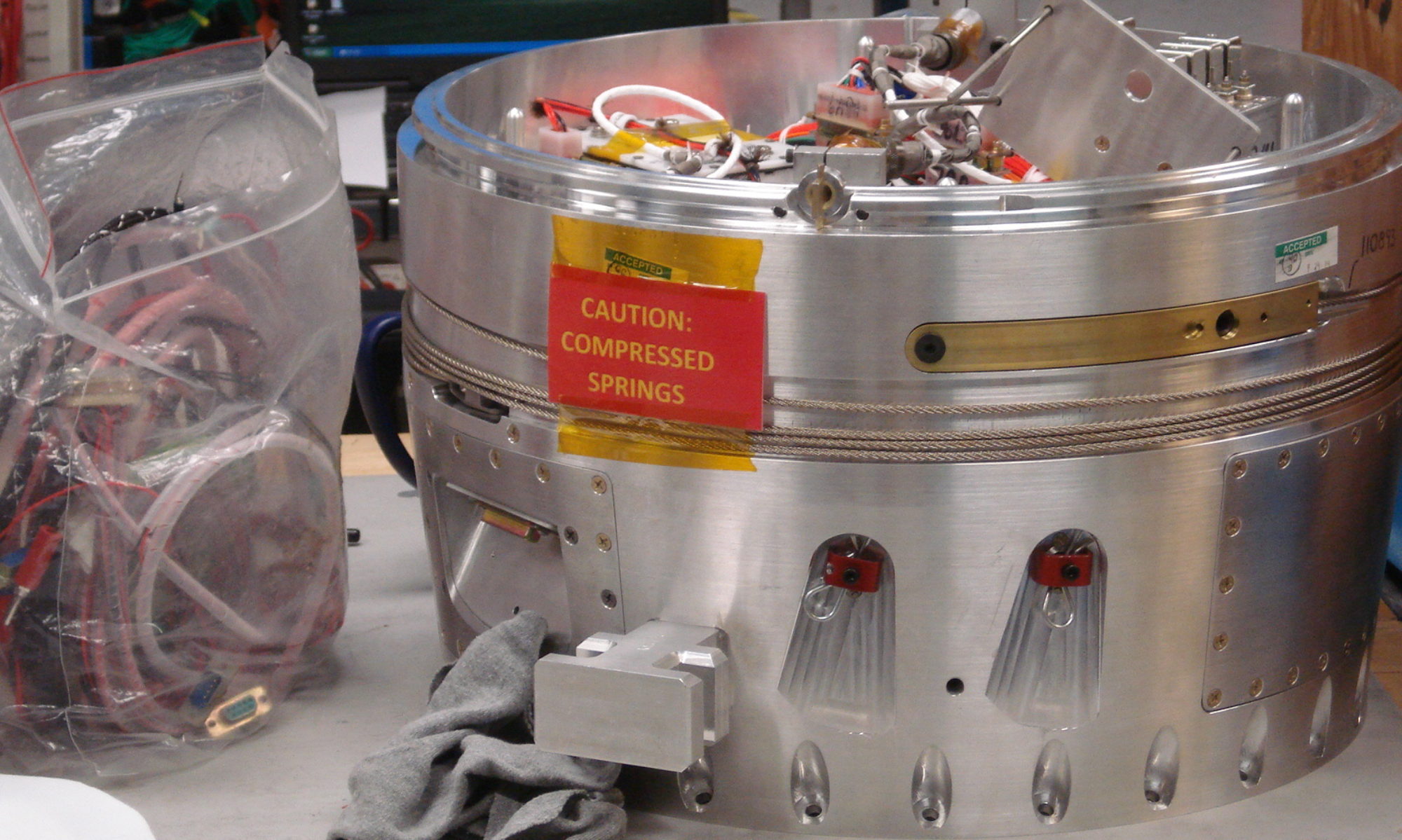
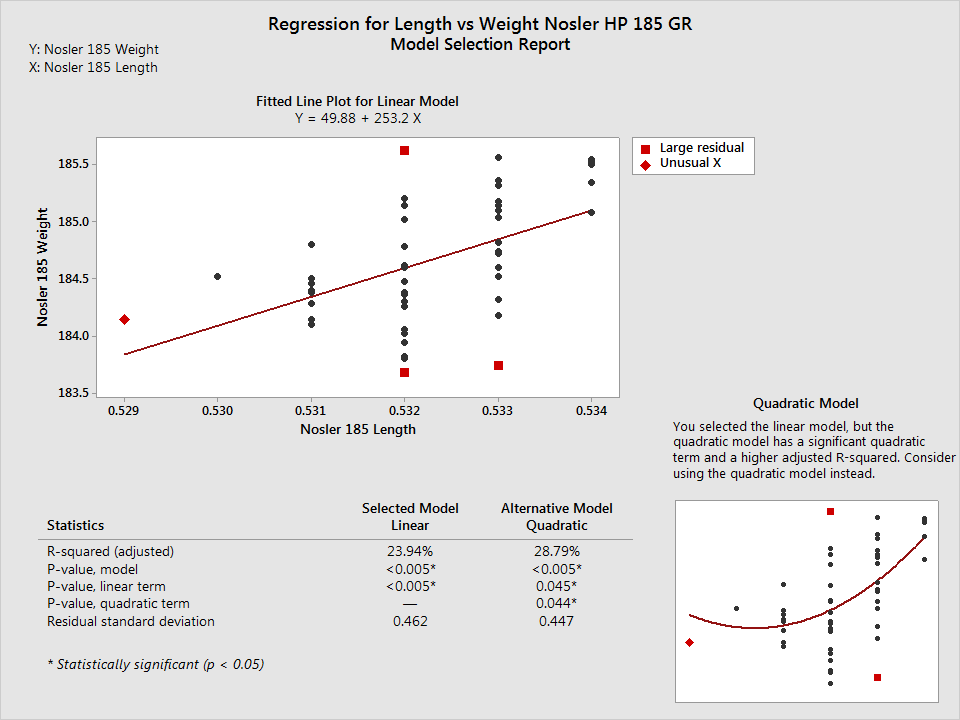
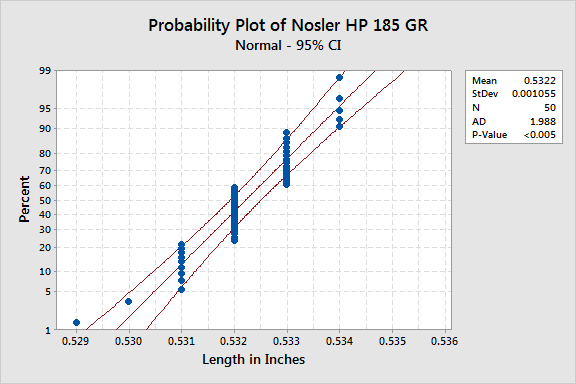
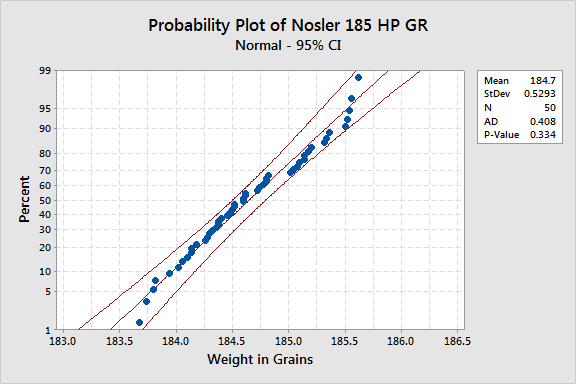
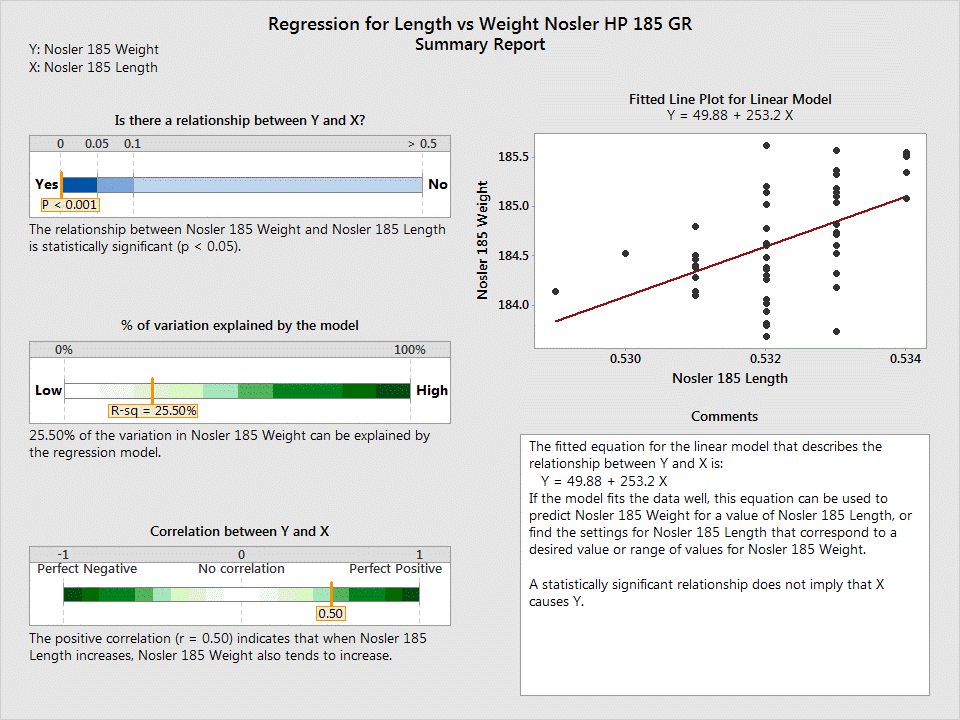
Very nice. More visible data helpful.
Well stated and nicely delivered. Help me understand the relationship between length and weight… more importantly, help me understand the contribution to accuracy with all other variables (trigger pull, breathing, etc…) held constant. Does a relationship exist?
Is the consistency of the round the biggest contributor to accuracy or are you trying to eliminate variables to improve overall performance?
Thanks for the comment!
I’m trying to eliminate variables in order to improve overall performance. I don’t have any firm hypotheses at present, just collecting data to see if there are any statistical differences in quality across similar components, and if so, are they helpful or harmful? For instance, it isn’t clear that underweight bullets are going to significantly change the point of impact @ 50 yards- though it does gall me a little that they are underweight when I paid for 185 full grains.
The limiting factor for any sort of shooting is the ability of the shooter. However, it is also true that, as the ability of the shooter increases, they are able to take advantage of mechanical/equipment improvements to give them the last bit of edge for their shooting. Since I aspire and practice to do well, I want to have both the psychological (confidence that I have proper equipment, all poor results are from deficient shooting process, etc) as well as mechanical (optimized load/pistol for conditions) domains covered.
Interestingly, to the best of my knowledge, many records in bullseye shooting where shot with cast lead and not jacketed bullets; if that’s the case, it makes me question shooting more expensive jacketed bullets over plain old cast ones.